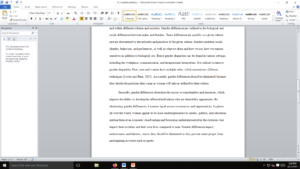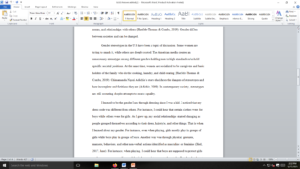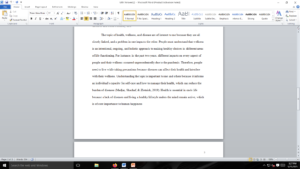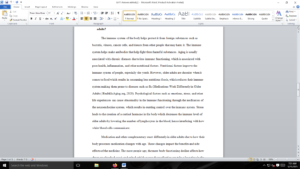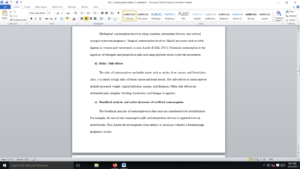ADD and/or ADHD (Attention Deficit [& Hyperactivity] Disorder) rates have skyrocketed in the contemporary USA, but they vary across cultural/ethnic lines. This suggests that ADHD is, in many ways, a ‘Culture Bound Syndrome.’ For this DB post, I want you to undertake a thought experiment:
1) Please define the term ‘Culture Bound Syndrome’ and then, using your intellect (i.e., not Google!):
2) Propose at least two features of contemporary Western culture (which includes the institution of K-12 education) that foster high rates of ADD/ADHD in US children/youth.
3) Explain how they do so.
4) Explain why things might not be this way in a contrasting cultural context.
Note that success in this activity does NOT hinge on adopting the perspective of cultural determinism. Consider behaviors/practices that affect biology and/or the epigenome.
In many (but not all) cultures apply a sex-based division of labor and certain rituals to cultivate and reinforce binary gender roles — although only a few gendered distinctions are, it turns out, concretely linked to biological sex per se, and most cultures allow for (and often hold in high esteem) certain non-binary roles also.
In this DB post, please identify an everyday practice common in your culture that reinforces the gender binary, narrowing people’s options. The more habitual and mundane the practice the better.
- Describe the practice.
- List the ramifications this practice has for how people express or embody their gender identity.
- Explain the practice’s biological impact (i.e., the way that it becomes embodied as a ‘biological fact’ and/or heightens any prior biological potentials) [To qualify for full credit your answer to this part of the question has to go beyond ‘stress’ or mental health issues. It has to speak to classically (anatomical, physiological) biological dimensions of life.]
Answer preview
Things will differ in a contrasting cultural context because the children/youths are exposed to an enabling environment that promotes their emotional and mental well-being. For instance, in a family where parents are present and supportive, children feel safe and included and received much-needed attention from their parents/guardians, unlike in a family where parent neglect their duties to their children. Similarly, growing up in an environment where no violence prevents children from experiencing the mental and emotional trauma that comes with exposure to family violence. This is because it takes a while for children to recover from traumas
[735 Words]

Perspective of cultural determinism
